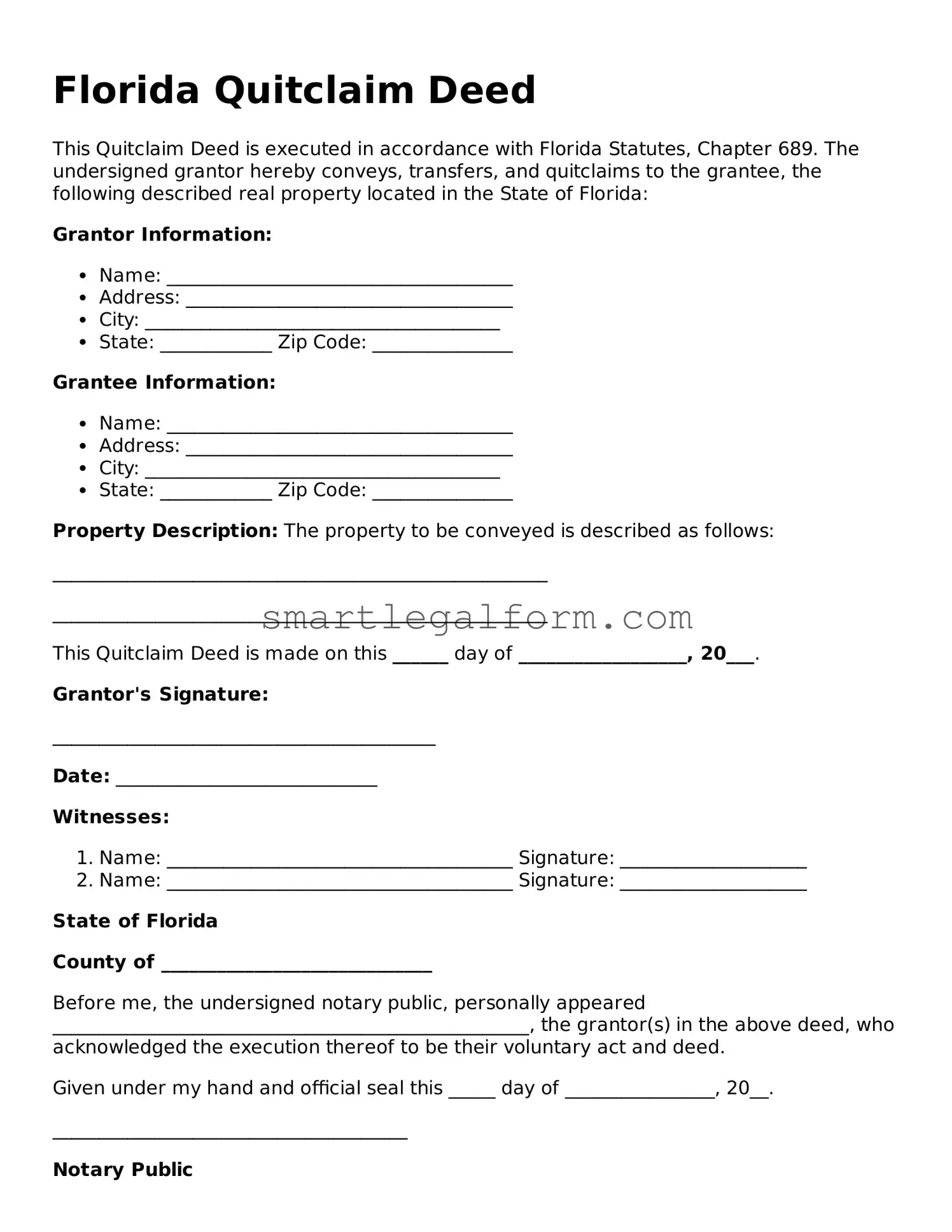Florida Quitclaim Deed
This Quitclaim Deed is executed in accordance with Florida Statutes, Chapter 689. The undersigned grantor hereby conveys, transfers, and quitclaims to the grantee, the following described real property located in the State of Florida:
Grantor Information:
- Name: _____________________________________
- Address: ___________________________________
- City: ______________________________________
- State: ____________ Zip Code: _______________
Grantee Information:
- Name: _____________________________________
- Address: ___________________________________
- City: ______________________________________
- State: ____________ Zip Code: _______________
Property Description: The property to be conveyed is described as follows:
_____________________________________________________
_____________________________________________________
This Quitclaim Deed is made on this ______ day of __________________, 20___.
Grantor's Signature:
_________________________________________
Date: ____________________________
Witnesses:
- Name: _____________________________________ Signature: ____________________
- Name: _____________________________________ Signature: ____________________
State of Florida
County of _____________________________
Before me, the undersigned notary public, personally appeared ___________________________________________________, the grantor(s) in the above deed, who acknowledged the execution thereof to be their voluntary act and deed.
Given under my hand and official seal this _____ day of ________________, 20__.
______________________________________
Notary Public
My Commission Expires: ____________________
